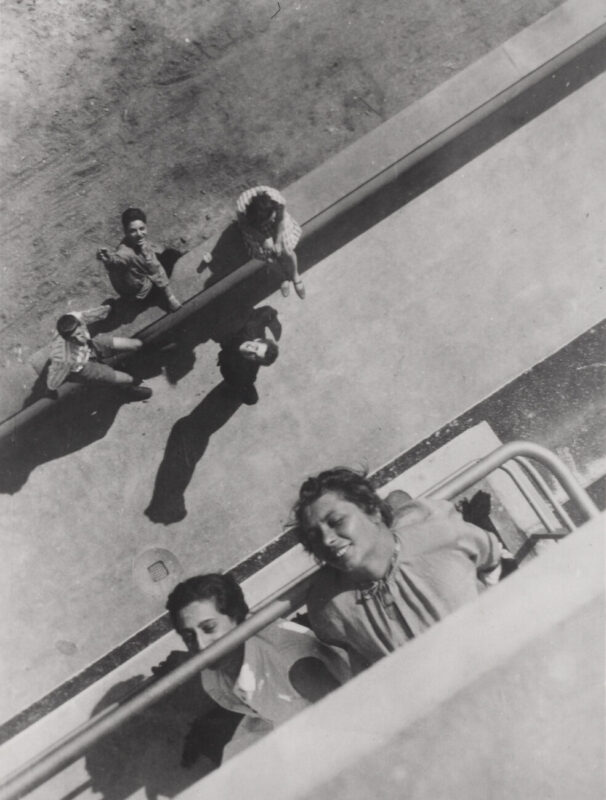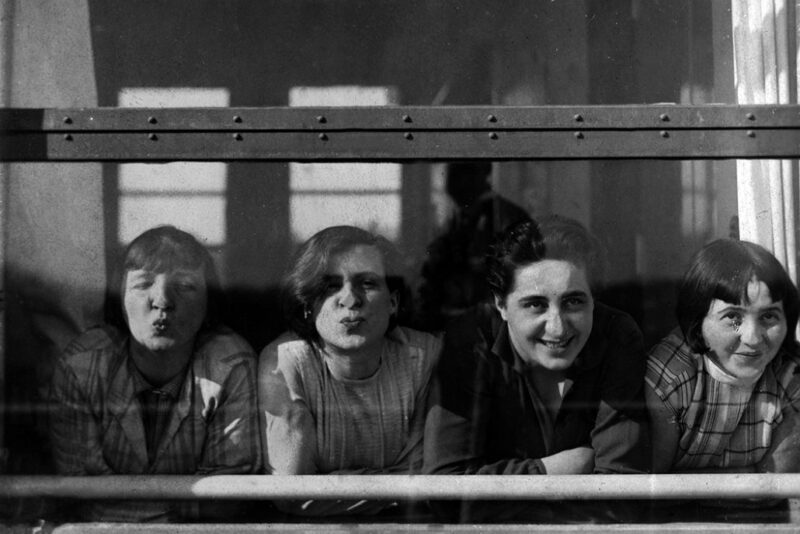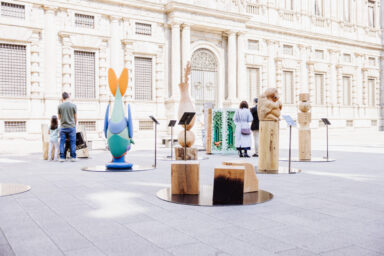475 students, 11 lecturers, 1 manager, 1 photographer and 6 artists around Gropius. 494, these were the women in the Bauhaus, a world wrongly thought to be dominated only by men. Historian Anty Pansera unveils and pays them homage at the Triennale in Milan with an exhibition and a book
Words: Tommaso Faloci
If for many, the 8th of March is merely a reminder of the persistent gender inequalities and the underrepresentation of women in decision-making roles, it is essential to emphasize that it is an opportunity to renew commitment to the struggle for a more equitable and inclusive world for all individuals, regardless of gender. Given that this is a subject very dear to Anty Pansera, author of “494 – Bauhaus al Femminile” and “Athena,” dedicated to the women present at the Bienniale and then Trienniale of Monza and Milan from 1923 to 1940 and the contexts of their education, as well as having had the opportunity to ask her some questions, it allowed me to engage and have an opinion imbued with wisdom – as well as a comprehensive observation – regarding the role of women in the fields of art, design, and project. Sitting at my desk, with the aforementioned books well in mind, I was greeted by a warm and kind voice that didn’t hesitate to introduce me into her own world as soon as I picked up the phone.
When did this interest and dedication towards the female side of art and design arise?
This interest arose back in 1999 when I was involved by the Unione Donne Italiane of Ferrara to curate an exhibition on female designers. Initially, I was skeptical, but after various reflections, consultations, and meetings with industry experts, I decided to embark on this new adventure. Since then, I have continued to delve into the topic, publishing books and organizing exhibitions and conferences. My commitment led to the founding of the DcomeDesign association in 2010 with some friends, of which I am the president; an association that keeps promoting and supporting the role of women in the world of design.
For the volume on Bauhaus, how and why did you delve into that specific historical and design period?
The journey began like this: while dealing with female creativity and design in general, in 2019 (the hundredth anniversary of the Bauhaus Foundation), I was invited to speak in various places about the women who attended it, and honestly, I didn’t know much about them at the time. I prepared interventions drawing from the materials that mostly interested me, especially regarding their work with ceramics, which had a difficult life at the Bauhaus, and the textile sector, which instead represented a sort of flag within it. But then, alas, fortunately or unfortunately, the lockdown arrived. While locked in my studio on Corso Garibaldi (deserted) in complete solitude, I started tidying up my materials a bit. What intrigued me the most was to resume precisely these two researches, which – let’s admit it – together with the possibility given to me by the very fast shipping services to procure books from Berlin or New York overnight and intelligently exploiting the Bauhaus archives found online, allowed me to start digging and bring out a whole series of brilliant female figures.
I came across this Italian designer who sparked a lot of curiosity in me: leaving from Avellino and going to Germany in the 1920s, well, it wasn’t a walk in the park. At first, I struggled to find material, then, thanks to a series of help from friends both local and not, I managed (meanwhile the book was about to be published) to complete the story, with a bit of healthy imagination of this woman named Maria Grazia Rizzo.
So, this was actually real archival research.
Exactly! I reflected and then realized that a Bauhaus conference had taken place in Avellino in 2019: with great effort, always remotely and during full lockdown, I managed to reconstruct a rather intriguing story, which takes place between Germany and Italy, in very difficult years.

How do you think stories like this can still inspire young people who are amid their studies and who may find it difficult because parents, or those on their behalf, believe that artistic paths are not entirely fruitful? Also, do you think that gender parity exists in academic courses today and what follows from it?
In my opinion, stories like these are a source of inspiration for young people, stories that can offer them the necessary motivation to pursue their goals. In our academic environments, the female presence is predominant; however, observing the wide panorama of awards, such as the Compasso d’Oro, or even just a general list of exhibitions currently ongoing, one realizes that outside of educational contexts, women are significantly underrepresented. There is no direct correspondence between the women attending courses and those who emerge in the professional world. This makes me reflect: where do they end up? Why can’t all of them succeed with determination?
Why do you think they struggle? Is it that the market doesn’t value them? Is it that they lack determination?
I would like to share an anecdote that deeply outraged me: I receive a call from Maria Chiara (my press office) informing me that a magazine, of which I will not provide the name, surname, or address, intends to feature a “beautiful” designer in their coverage. Some portraits of the designers exhibiting at UPTO, the exhibition we are preparing for Design Week, are sent to her to choose from: talented and cute ones… Others, who in my opinion are very interesting from a professional point of view and for their research and who have developed a truly innovative project, but who are not stereotypically beautiful, remain second choice. It is unacceptable that a magazine focusing on women only seeks the prettiest.
Talking about the importance of International Women’s Day, I remain a bit skeptical, although I understand the need to remember significant events related to women’s struggle for their rights. However, we should also reflect on other issues affecting women worldwide, such as the situation of women in countries like Afghanistan and Iran. It is essential to continue mobilizing to support women in difficult situations and work towards greater gender equality.
Finally, in response to the question of how my figure may have influenced the progression of women in the artistic field, I can say that I have personally never paid attention to others’ evaluations. I was lucky to have a partner who always supported me, but I chose not to have children. Looking back on my journey, I believe I had fewer opportunities than I could have obtained.

Nevertheless, it is evident that throughout your life you have done a lot for the cause.
I have certainly committed myself to the cause, more and less directly, but I have. I do not consider myself a feminist, but I believe it is absolutely right that women’s talents are nowadays recognized.
Regarding the book, I would like to conclude with a personal question. Apart from the prominent figure we just talked about, I would like to know if there is another figure, perhaps not Italian, that you would be interested in telling?
I had the impression that they were all very free, committed women, perhaps without much solidarity among them… but it makes sense, considering the times.
Jewish girls were numerous, also because they came from more open families for that time; among these, I like to remember two figures in particular. And there were 31 Jewish female students out of 200 Jewish students.
And so, Friedl Dicker-Brandeis (1898-1944), in the Terezin camp, long used by the Nazis as an example of a “model ghetto” for propaganda purposes, gathered numerous children around her to encourage them to draw, using the Artherapy she had learned during her Bauhaus courses. She later followed them to Auschwitz, where she also perished.
However, before that, she had concealed the drawings of her young students in large suitcases in Terezin, which were recently uncovered. But to end on a positive note, I want to remember another Jewish girl named Liesbeth Osterreicher: she was a sort of “modern Penelope”. A Bauhaus graduate, she gained fame for her knitwear, appreciated and published in fashion magazines; she managed to prolong her presence in Westerbork, a transit camp, by knitting sweaters for the wife of the camp commander, Albert Konrad Gemmeker. During the day, she worked, weaving and preparing the requested garments. At night, she unravelled them. A true modern Penelope, she managed to pass the time and save herself and her future husband Otto Birman, a chemical engineer, from the gas chambers: project management, practical skills, and talent.
Bio: Anty Pansera, art and design historian and critic born in Milan, approached the world of design and products through teaching at ISA in Monza: an experience that opened the doors to a new world for her, that of design and project. It is here that she had the opportunity to meet leading figures in the industry, such as Mario Tevarotto and Alfonso Grassi, who introduced her to a world rich in creativity and innovation, which has accompanied her to this day. This marked the beginning of a career abundant in experiences and accomplishments in the realm of teaching and advocating for design. After spending years teaching at the Politecnico di Milano and the Academy of Fine Arts of Brera, she chaired the ISIA – University of Design in Faenza for six years. Furthermore, she is among the founding members of the DcomeDesign Association, where she currently holds the position of president. She has served on the Board of Directors of the Design History Foundation and on the Scientific Committee of the Design Museum of the Triennale Foundation in Milan. Today she is a curator at the MIDeC Ceramic Design Museum in Laveno (Va). Always focused on female contributions in the industry, her interest in highlighting the role of women in the artistic field has developed over time, making her a prominent figure in the debate on gender equality in contemporary design.



